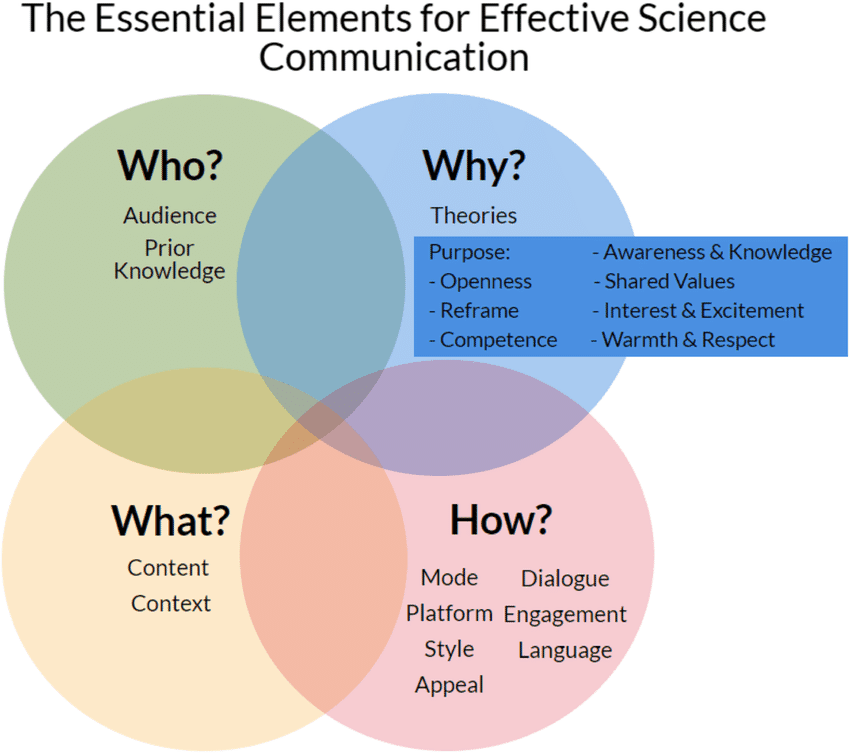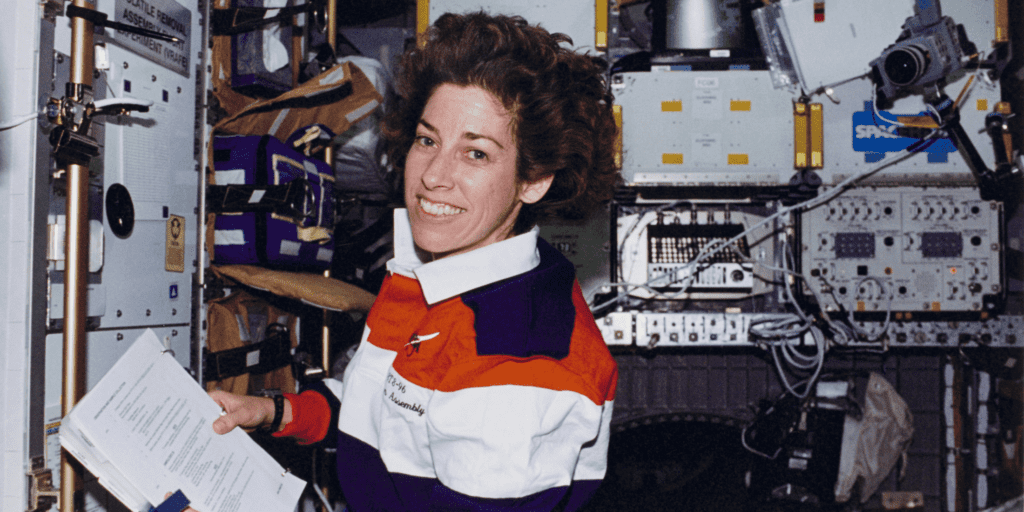Establishing a Baseline of Science Communication Skills for Middle and High School Students
Establishing a Baseline of Science Communication Skills for Middle and High School Students
![Science Communication Skills for Students Blog Header [PHOTO: 6 TH grade students ask thoughtful questions, create a Driving Question Board, and explore how their
questions are related to each other (OpenSciEd). CREDIT: @gretchenmilary / X]](https://activatelearning.com/wp-content/uploads/2024/05/Science-Communication-Skills-for-Students-Blog-Header.png)
Quick Take: This blog post explores the urgent need to equip students with science communication skills and introduces the Essential Elements for Effective Science Communication (EEES) framework as a guide for educators. Through investigative research projects, equitable discussions, and innovative, NGSS-aligned curricula, science teachers can empower their students to become confident and effective science communicators. 🚀
Building Science Communication Skills for Students
The landscape of science and science communication (SciComm) is undergoing a dramatic transformation. The rapid advancement of technologies, the emergence of new scientific fields, and the increasing complexity of global challenges have created an environment where effective science communication skills are more critical than ever.
Science education is a critical player in equipping students to navigate the complex and ever-changing world of science communication. This is especially true for middle and high school students at a critical stage in their academic and personal development. Today’s students are not just passive recipients of scientific knowledge; they are active participants in creating and disseminating this information. They navigate a complex information landscape cluttered with misinformation and rapidly emerging technologies that will impact their professional lives in profound ways that we can’t fully comprehend or predict.
There’s a sense of urgency to equip the next generation of scientists, leaders, and citizens with the essential science communication skills they need to thrive. Giving students effective SciComm skills and tools can empower them to participate actively in the scientific process and make meaningful contributions to society. It also contributes significantly to developing a strong sense of science identity (the degree to which students see themselves as “science people” and feel a sense of belonging and purpose in the scientific community). Recent research has shown that students with strong science identities are more likely to engage in science-related activities, persist in science-related careers, and communicate science effectively to others.
Moreover, in an era where scientific misinformation is rampant and public trust in science is often eroded, cultivating a generation of scientifically literate citizens who can critically evaluate information, distinguish facts from falsehoods, and engage in informed decision-making is more critical than ever. With students contributing to groundbreaking science and passionately participating in student activism on science-related issues like climate change, science communication for today’s students has gone from the school science fair to the real world.
This post explores how teachers can help students develop essential science communication skills to prepare them for this brave new SciComm world.
The Essential Elements for Effective Science Communication Framework
The development of effective science communication skills should start long before students reach college. SciComm abilities, when nurtured early, can significantly enhance a student's academic and professional trajectory.

International Journal of STEM Education
A recent study in the International Journal of STEM Education (Establishing a baseline of science communication skills in an undergraduate environmental science course), uses the Essential Elements for Effective Science Communication (EEES) framework to evaluate and enhance the SciComm abilities of college students. This research highlights the initial capabilities of students in communicating complex scientific ideas and the potential for growth with structured guidance. While the study focused on undergraduate students, its findings and the EEES framework offer valuable insights that can be adapted for middle and high school classrooms.
The EEES framework is organized into four critical elements for effective science communication: who, why, what, and how. These elements include understanding the audience, clarifying the purpose of the communication, choosing appropriate language and format, and evaluating the effectiveness of the communication. Each component is crucial in ensuring that diverse audiences convey, understand, and appreciate the information.
Audience Understanding: Knowing who the information is for and their baseline understanding of the topic.
Purpose Clarity: Defining clear objectives for what the communication seeks to achieve.
Language and Format Appropriateness: Selecting the right words and media to match the audience's needs and the message's intent.
Effectiveness Evaluation: Assessing the impact of the communication and making necessary adjustments for future interactions.
This framework helped students articulate scientific concepts, defend their viewpoints, and contribute constructively to discussions.
The study found that even without explicit instruction in the EEES framework, students intuitively incorporated several elements into their science communication projects, especially those explicitly mentioned in the assignment instructions.
Bringing Baseline SciComm Skills to Middle and High School Students
Integrating certain elements of the EEES framework into middle and high school science learning, with investigative research projects and equitable discussion strategies, forms a robust and comprehensive approach to developing science communication skills.
Investigation-Centered Science
Investigative research projects are a powerful tool for developing science communication skills and fostering a strong science identity in younger students. These projects involve students actively engaging in the scientific process by formulating research questions, designing experiments, collecting and analyzing data, and communicating their findings to various audiences. Activate Learning's K-12 curricula, which is fully aligned with the Next Generation Science Standards (NGSS) and incorporates 3-dimensional learning, offers a comprehensive approach to integrating investigative science projects into middle and high school classrooms.
Our investigative research projects offer numerous benefits for students' science communication skills and science identity:
Authentic experience: By engaging in real-world research, students gain a deeper understanding of the scientific process and develop practical skills that prepare them for future careers in science.
Improved communication skills: Through presenting their findings to diverse audiences, students learn to adapt their communication style, use appropriate language, listen thoughtfully to feedback, and engage in meaningful dialogue about their research.
Enhanced science identity: Participating in investigative research projects helps students see themselves as capable scientists, contributing to a stronger sense of belonging within the scientific community.
Increased confidence: As students successfully navigate the challenges of research projects, they build confidence in their scientific abilities and capacity to communicate complex ideas effectively.
Greater engagement and motivation: Investigative research projects allow students to explore their passions and interests, leading to increased engagement and motivation in science learning.
Three-dimensional, investigative research projects naturally align with the EEES framework, addressing the key components of "who," "why," "what," and "how." Both approaches emphasize the importance of engaging students in authentic scientific practices, developing their ability to communicate scientific ideas effectively, and giving students a baseline skillset for real-world science communication.
Fostering Equitable Discussions
In our blog post "Empowering Student Voices: The Power of Equitable Discussions in Science Education with OpenSciEd", we highlight how our OpenSciEd middle school curriculum prioritizes authentic, student-driven inquiry and equitable discussions, creating a learning environment where all students feel valued, heard, and supported. As students begin to explain science and their research to family members and the broader community, the ability to foster equitable discussions becomes key.
Communication tools like the Driving Question Board (DBQ), used in our curricula, further support the development of students’ science communication skills and equitable discourse with their peers. The DQB is a large poster board prominently displaying the driving question for exploring phenomena in each curriculum unit The DQB acts as a visual reference point, featuring the driving question at its center, surrounded by sub-questions representing curriculum units' main learning goals. Most importantly, the DQB is a collaborative creation, jointly constructed by both students and the teacher at the start of the unit, and it evolves throughout the learning process.
This aligns with the "how" element of the EEES framework, which emphasizes the importance of dialogue, engagement, and the use of appropriate language and platforms in science communication. Fostering equitable discussions empowers students to see themselves as capable and valued members of the scientific community. This feeling of empowerment and strong identity not only boosts their confidence but it builds empathy and listening skills.
A great example of this can be found in our Colonial School District case study, which outlines the significant improvement in students’ social-emotional learning after the pandemic with OpenSciEd.

More Tools, Tips & Strategies to Develop Science Communication Skills
In addition to using the EEES framework and investigative research projects, here are a few do's and don'ts for creating effective science communication classroom experiences:
Do:
- Focus on developing students' ability to explain science in simple terms
- Use NGSS-aligned curriculum that puts students at the center of their learning journey
- Provide constructive feedback and support to students while giving them the freedom to express themselves uniquely
- Provide language translation tools for all materials
- Offer ample opportunities for students to practice their skills both inside and outside the classroom
Don't:
- Dictate the topics students should communicate about
- Provide unconstructive feedback or talk down to students
- Expect students to become expert science communicators overnight
- Force specific opportunities on students without considering their interests and preferences
- Don’t moderate discussions in a way that hinders individual, unique expression
There’s no shortage of tools to help middle and high school science educators introduce students to science communication. A great place to start is with NGSS-aligned curriculum that puts the student’s voice at the center of the learning experience such as our Active Physics, EarthComm, Engineering the Future, and OpenSciEd curricula.
Activate Learning provides comprehensive support and resources for implementing investigative research projects, including professional learning, curriculum materials, and a digital platform with embedded text translation to over 130 languages. To learn more about how we can help you bring science communication skills to your students that prepares them for the future, contact us for more info.
* * * * * *




